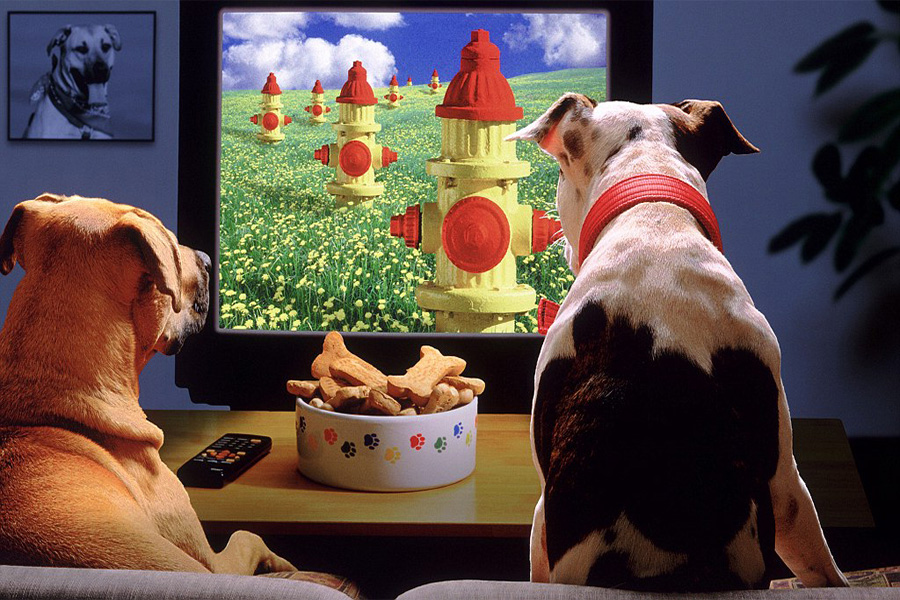
Dogs might be able to see images and recognize animals on television in a way similar to how humans do, according to a study published in the journal Animal Cognition. The researchers who conducted the international study may have answered an age-old question: Do dogs understand what they are watching on TV?
We all know that dogs love to watch TV. But what do they see when they’re watching their favorite shows? Are they just seeing blurry movement, or do they actually understand what’s going on? Turns out, dogs can see some pretty impressive detail on the screen! Keep reading to learn more about how dogs see TV and what you can do to keep them entertained.
Can Dogs See TV?
It has been shown that dogs can see images on television, but it is not clear whether they are able to interpret what they are seeing. Some people believe that the flickering of the screen confuses dogs and makes it difficult for them to understand what they are seeing. However, there has been no scientific evidence to support this claim.

Do Dogs Know That TV Isn’t Real?
Do dogs know that TV isn’t real? Some people argue that they do, while others maintain that dogs are too unsophisticated to understand the difference. The truth is that no one really knows for sure.
However, there is some evidence to suggest that dogs may be able to tell the difference between reality and television. For example, a study published in 2009 found that when dogs were shown a video of their owner being playful and happy, they tended to look more at the screen than when they were shown a video of an unfamiliar person being playful and happy. This suggests that dogs may be able to distinguish between real-life situations and filmed situations.
Should You Leave the TV on for Your Dog?
There is no definitive answer to this question as it depends on a variety of factors, such as the size and breed of your dog, the type of programming they are watching, and how much time you spend at home.
That said, leaving the TV on for your dog can provide them with some companionship and stimulation if you’re not able to be there with them. It can also help keep them calm and quiet if you have to leave them alone for an extended period of time. however, you should make sure that they aren’t watching too much violence or aggressive content which could potentially cause them anxiety or behavioral problems.
Our findings show that domestic dogs have some, but not all of the capabilities necessary to enable them to think about what happens around them when they watch TV. They can tell the difference between movies and reality, and recognize familiar movie characters. But for many other images, their eyes only give them part of the story—they don’t understand that it’s still a picture of a real world event until they hear an accompanying sound or see a person on screen reacting.
Dogs See TV FAQ:
Is it OK for dogs to watch TV?
Some people say that it’s not good for dogs to watch TV because it can make them lazy and inactive. Others say that it’s fine as long as the dog isn’t watching too much.
There hasn’t been any definitive research on the subject, so it’s hard to say for sure what the effects of TV viewing may be for dogs. Some people argue that TV can actually be beneficial for dogs since it can help keep them entertained and mentally stimulated. Others believe that too much screen time can lead to obesity and other health problems in dogs.
What do dogs see when they look at a TV?
The study, carried out by researchers at the Messerli Research Institute at the University of Veterinary Medicine, Vienna, the Comparative Cognition Laboratory of the DogWatch Research Center in North Carolina, USA and the School of Psychology at Durham University, UK suggests for the first time that dogs can not only perceive images on TV as we do but that they are also intelligent enough to make sense of them.
Do dogs understand kisses?
Many dog owners talk in a loving, gentle way to their dogs. When you see them kissing them, what do you think they are saying to them? Probably something nice and sweet, right? They may say things like “I love you, buddy,” or they might use a comical tone while talking to them. However, the dog is not actually understanding the words. This just shows that we sometimes train our dogs over time to understand more of what we’re saying to them.

